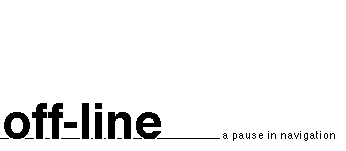We are at the end of another year in which there has been more discussion
of net failure than of its success. To a large extent, it’s nonsense.
There is no “internet crisis”. Some of the financial and
mismanagement “bubbles” have deflated (there will be more)
and many poorly conceived online activities are in trouble. But that has nothing
to do with the basic strength and continuing growth of the internet.
On the other hand, from a different perspective, there are
diseases for which an effective treatment is still to be found.
Statistics can be unreliable and confusing, but some
trends are pretty clear. Worldwide
hostcount data show somewhat slower growth in 2002 than in
past years. Expansion never was “exponential” – and
we may be going through a more sober phase. The latest
available indicator – 16 percent growth in year 2002 –
is the lowest percentage in the net’s history, but it can’t be
called “slow” by any standard. It’s still much
faster than the economy as a whole – and of most other
development factors.
In some areas, growth is much faster than average. For
instance Italy, three years ago, was and online
“underdog” compared to most of the European Union.
Now it’s moving ahead. And so are other countries. (See
European data.)
Statistics about internet “users” are, as
always, unreliable. However it seems clear that, in several places,
the number of people online has been growing more slowly
in 2001 and 2002 (see “user”
data on Italy and some other countries.) Such trend
variations are to be expected in any evolutionarydevelopment.
We are not getting near any “threshold”
and there is still considerable room for expansion.
The internet, as a whole, is here to stay – and in fairly
good health. But there are problems that aren’t just
“growing pains”. They are vicious, contagious
diseases – and they are getting worse. The most obvious, at
this time, is spam (a whole issue
of the Netmarketing newsletter concentrates on this subject.)
In some international discussion groups this is seen as a
catastrophe. Are we really risking “death by spam”
– as many are saying? Is this cancer, or an incurable
infection? That’s unlikely. But it would be silly to
underestimate the problem. The expansion of the disease was
identified too late. We still lack a clear diagnosis and no
really effective treatment has been found.
Spam has been known and quite clearly defined for twenty
years. But only recently it expanded to unbearable
proportions. The net’s immune system is reacting, but it
heeds some help to be more effective.
While spam is infecting mostly e-mail, there are vicious diseases
also in other parts of the internet – such as the world wide web.
Centralization pressures, a variety of invasive devices, sites crammed
with traps and de-routing tricks, etcetera.
I don’t agree with those critics who think that commerce,
per se, is a disease. There is, and there must be, appropriate room online
for business and trade. If properly managed, they can contribute to
the usefulness and content value. But the business world hasn’t
yet fully understood how seriously the spam disease is infecting the marketplace.
Spam, invasive techniques, oniline traps, etcetera, are poisoning
the environment. Crooks and swindlers are multiplying. That is very
harmful for e-business – as well as polluting the culture, the network
of human relationships, that is the necessary soil for the growth of any
healthy and durable business venture.
The net can be a valuable tool to move out of the
economic and cultural doldrums. But it’s important and urgent
to free it from spamming and other diseases. There is, at last,
increasing awareness of the problem. Now we need a solution.



